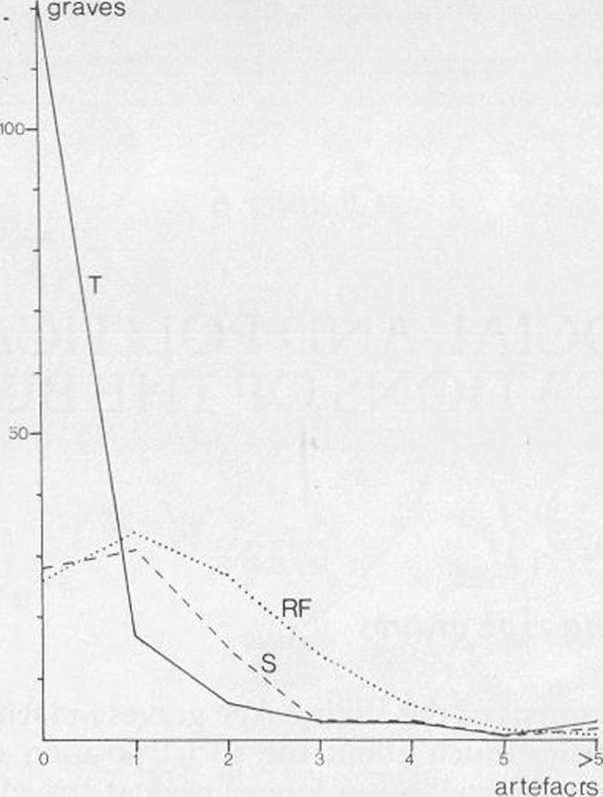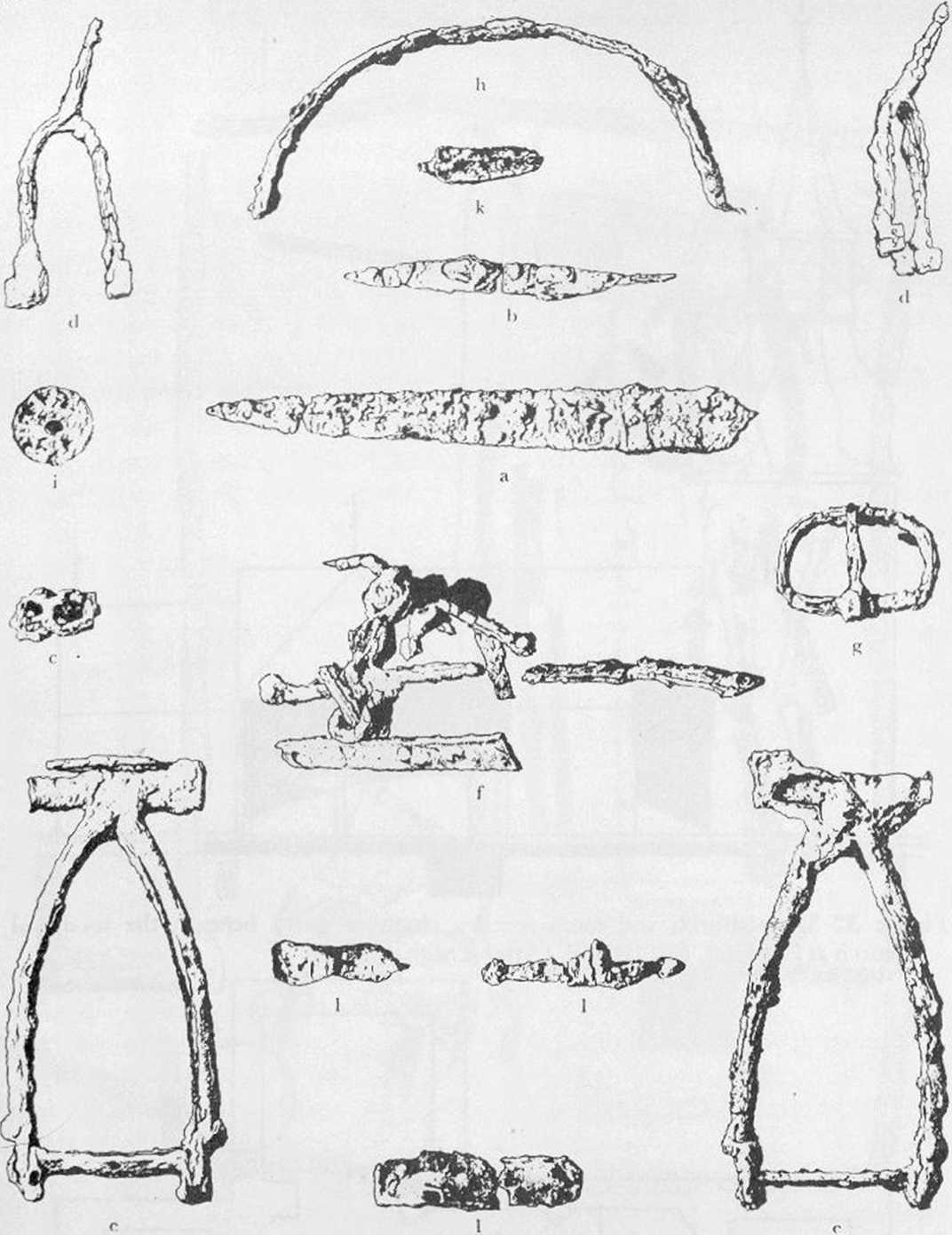64 (171)
122 The Viking Age in Denmark

Figurc 30 Distribution of wealth in three cemeteries as measured by thc numbcr of different artefacts in the gravcs. RF = Ris Fattigg&rd, northjylland, basically ninth century (Ramskou 1950, 144f.). S = Stengadc, island of Langcland, tcnth ccntury (Skaarup 1976). T = Trelleborg, west Sjaelland, tcnth ccntury (N^rlund 1948)
even a single artefact.
Apart from the provinces inJylland mentioned already, cremations occur rarely. Inhumations are found all over the country, but they are few in northernmost Jylland. The northjylland cremations may well correlate with a tribal area, geographically well circumscribed.
Traditionally, furnished graves are considered pagan; but it is a fact that a number of interments with Christian crosses of the tenth century contain other grave-goods too.2 Not until the close of the tcnth century do furnishings actually disappear, perhaps in connection with the establishment of burial grounds around churches. On the other hand, the majority of inhumations are poor anyway, and in addition they usually follow the ‘Christian’ east-west orientation (though not rigorously), with the head to the west, and a supine position of the body.3 Few graves have the head to the east or the body in a crouched position. A prominent group of burials, almost all from Skane and Bornholm, however, lie north-south. Mounds, some of them old Bronze Age mounds, are relatively rare, but they occur freąuently on the island of Bornholm, which, incidentally, has most of the north-south and crouched graves. Bornholm may also be seen

Figurę 31 Tenth-century cavalry grave from Kasmusm0lle, southjylland. Notę spurs (d), handle tor wooden bucket (h), spearhcad (a), heavy bit (f), stirrups (e), etc. (Hcight of stirrups circa 26 cms). (After Bnpndsted)
as a scparate ‘tribal’ area.
A tenth-ccntury cemetcry from Stcngade on Langeland4 (cf. Fig. 30) displays the diffcrent types of cover for the body in usc in Viking Age Denmark: a simple wrapping, a wooden coffin, or a chamber. The chambers are all from about 900 or the tenth century5 and, apart
Wyszukiwarka
Podobne podstrony:
35 (355) 64 The Viking Age in Denmark o I—I-L. Figurc 17 A-B. The Vorbasse settlcmcnt (mid-Jylland)
57 (213) 108 The Viking Age in Denmark Platę IV. Silvcr and copper dccorated spurs, length about 21
58 (195) 110 The Viking Age in Denmark Platę VI. Sample from late tenth-century silver-hoard at Taru
60 (189) 114 The Viking Age in Denmark Platc X. Ship-sctting and runestonc (on smali mound) at Glave
62 (179) 118 The Viking Age in Denmark Plato XIV. Iron tools from a tenth-ccntury hoard atTjclc, nor
63 (170) 120 The Viking Age in Denmark % Platę XVI Pagc with illustration of an English manuscript f
66 (160) 126 The Viking Age in Denmark have becn fouhd (Figs 32-3).7 They stem from thc same provinc
68 (153) 130 The Viking Age in Denmark two tortoise bucklcs to reprcsent wornen of high standing, th
69 (151) 132 The Viking Age in Denmark heavy cavalry burials, fincr wcapon graves of thc simple type
70 (150) 134 The Viking Age in Denmark cemetcry at Lejre on Sjaelland a dccapitatcd and ticd man was
74 (134) 142 The Viking Age in Denmark 5C~ł silver 800 900 kxx) A.D. Figurę 37 Fluctuations in che r
75 (129) 144 The Viking Age in Denmark Figurę 38 Average weight ofthesilver-hoardsofthe period 900 t
27 (504) 48 The Viking Age in Denmark Europcan meteorological data for earlier per
29 (466) 52 The Viking Age in Denmark We have already mentioned the expansion of grasses, and it is
30 (454) 54 The Viking Age in Denmark touch, so the political developmcnt we have described in previ
31 (444) 56 The Viking Age in Denmark pig SO- A horse B 50- 50 cattle 50" sheep (Qoat) Figurę 1
32 (433) 58 The Viking Age in Denmark and from a rurąl scttlemcnt, Elisenhof, less than fifty kilome
78 (124) 150 The Viking Age in Denmark Figuro 41 Danish coins, c. 800 to 1035 A.D. (1) = ‘Hcdeby’ co
79 (124) 152 The Viking Age in Denmark Roskilde, in the newly won provinces, were the most important
więcej podobnych podstron